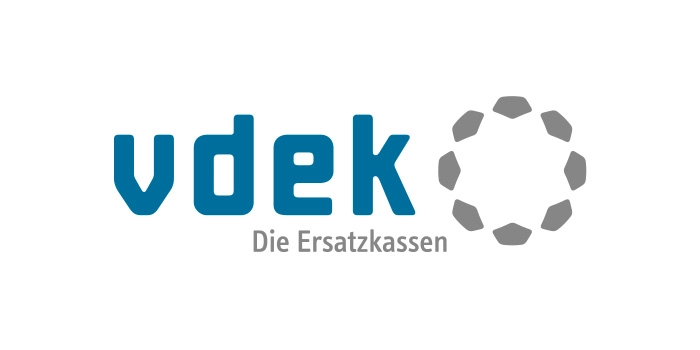

Automated reporting obligation with msg
Automated processes - competitive advantage secured
In just two months, HANSA-FLEX AG is working with msg to implement the European reporting obligation for substances of very high concern (SVHC).
In just two months, HANSA-FLEX AG, together with the IT consulting and system integration company msg, has implemented the European reporting obligation for substances of very high concern (SVHC). The msg.SCIPper solution now transmits over 65,000 reports on SVHC substances to the European Chemicals Agency (ECHA) in a fully automated process. HANSA-FLEX AG thus works in compliance with the law and can answer customer inquiries about ingredients immediately.
Customer
HANSA-FLEX AG, headquartered in Bremen, employs around 4,000 people and is Europe's leading system provider in the field of fluid technology. The breadth and depth of its products and services make the company a sought-after value-added partner, as solutions from a single source are preferred in a key technology such as hydraulics. The machines, plants and systems of HANSA-FLEX AG customers must run: safely, reliably, around the clock. Availability counts, downtime costs money. The protection of people and the environment excludes compromises.
Challenge
HANSA-FLEX did not have much leeway when it learned of the new European SCIP (Substances of Concern In articles or Products) reporting obligation in October 2020: He was astonished to read in a VDMA newsletter that, according to the SCIP reporting obligation, he should report all HANSA-FLEX AG products containing substances of very high concern (SVHC) above a threshold value of 0.1 percent to the European Chemicals Agency (ECHA) as early as January 1, 2021. Time was short, but he was determined to take up the challenge. As Europe's leading system provider in fluid technology, HANSA-FLEX AG stands for excellent customer service, which includes implementing compliance requirements quickly.
“It was immediately clear to me that implementing the ECHA reporting obligation as part of the in-house SAP infrastructure would be too time-consuming and costly,” says Schreuder, the team leader at the time, explaining his considerations. Migrating SAP R3 to S/4HANA tied up all resources at the time. In addition, the necessary adjustments were very far removed from the core function of the ERP. His team therefore concentrated on querying the data from Master Data Management and the STEP product data management software from Stibo Systems. HANSA-FLEX AG had already been using this solution since 2017. In addition, Nico Schreuder's team has been working continuously with the IT consulting and system integration company msg for two years to further adapt the STEP solution to the company's needs and improve data performance and the web user interface, making it very easy to automate data processing and message transmission.
Objective
Building on this successful collaboration, team leader Schreuder did not want to integrate a makeshift solution to ensure compliance. Instead, his goal from the outset was to develop a lighthouse solution that would report all hazardous substances in HANSA-FLEX AG products to the ECHA as automatically as possible. By mid-2021, every customer should be able to enter a material number and receive a result immediately. Nico Schreuder says: “The focus is increasingly on sustainability. It's only a matter of time before other substances in addition to 65,000 HANSA-FLEX AG products with a lead content of more than 0.1 percent become subject to mandatory reporting. We want to be prepared for this.”
Solution
Nico Schreuder consulted the master data project manager Anchana Prütz from the IT consulting and system integration company msg for a fast, results-oriented introduction of the new solution. Anchana Schütz reports: “The first step was to transmit 21,000 reports on articles with a lead content of 0.1 percent in January. With the msg.SCIPper solution in combination with STEP, this can be implemented perfectly. The automation of data processing and message transmission required by HANSA-FLEX AG can also be easily implemented.”
How it works step by step: Employees enter the article characteristics via the user-friendly web interface or upload a list. Afterwards, msg.SCIPper automatically checks whether all mandatory data for identification and handling, dependent other objects and details on the affected elements and ingredients are available. Then msg.SCIPper automatically transmits the information to ECHA, which confirms the notification.
“When updating individual materials, msg.SCIPper checks which notifications to the ECHA are mandatory and makes them. If msg.SCIPper does not recognize a data record, the system displays it in the msg.SCIPper Graphical User Interface (GUI) and notifies the responsible employees by e-mail. Nico Schreuder reports: “This allows the data to be cleansed, otherwise everything runs automatically."
Customer
HANSA-FLEX AG
Industry sector
Processing industry
Initial situation
HANSA-FLEX AG wanted to implement the SCIP reporting obligation, which comes into force on January 1, 2021, as quickly as possible. All articles whose lead value exceeds the threshold value of 0.1 percent should be reported to the European Chemicals Agency (ECHA) as automatically as possible.
Task
- Project implementation in just a few weeks
- Seamless integration into the STEP product data management solution from Stibo Systems
- Automatic data record recognition and automation of the reporting processes
- Simple operation and scalability of the solution
Solution
The chosen solution msg.SCIPper automatically checks whether all mandatory data for identifying and handling newly added articles is available. It then automatically transmits the information to the registration authority, which confirms the notification. When individual materials are updated, msg.SCIPper checks which notifications are mandatory and makes them. If a data record is not recognized, the system displays it and notifies the responsible employees by e-mail.
Benefits
- Ensuring the legal compliance of HANSA-FLEX AG
- Automation of reporting processes for articles containing substances of very high concern (SVHC)
- Very good and easily scalable solution
- Ensuring supply chain security with regard to SVHC substances for all customers
- Customers receive all information on SVHC substances automatically in self-service with just a few clicks
Ihr Ansprechpartner












